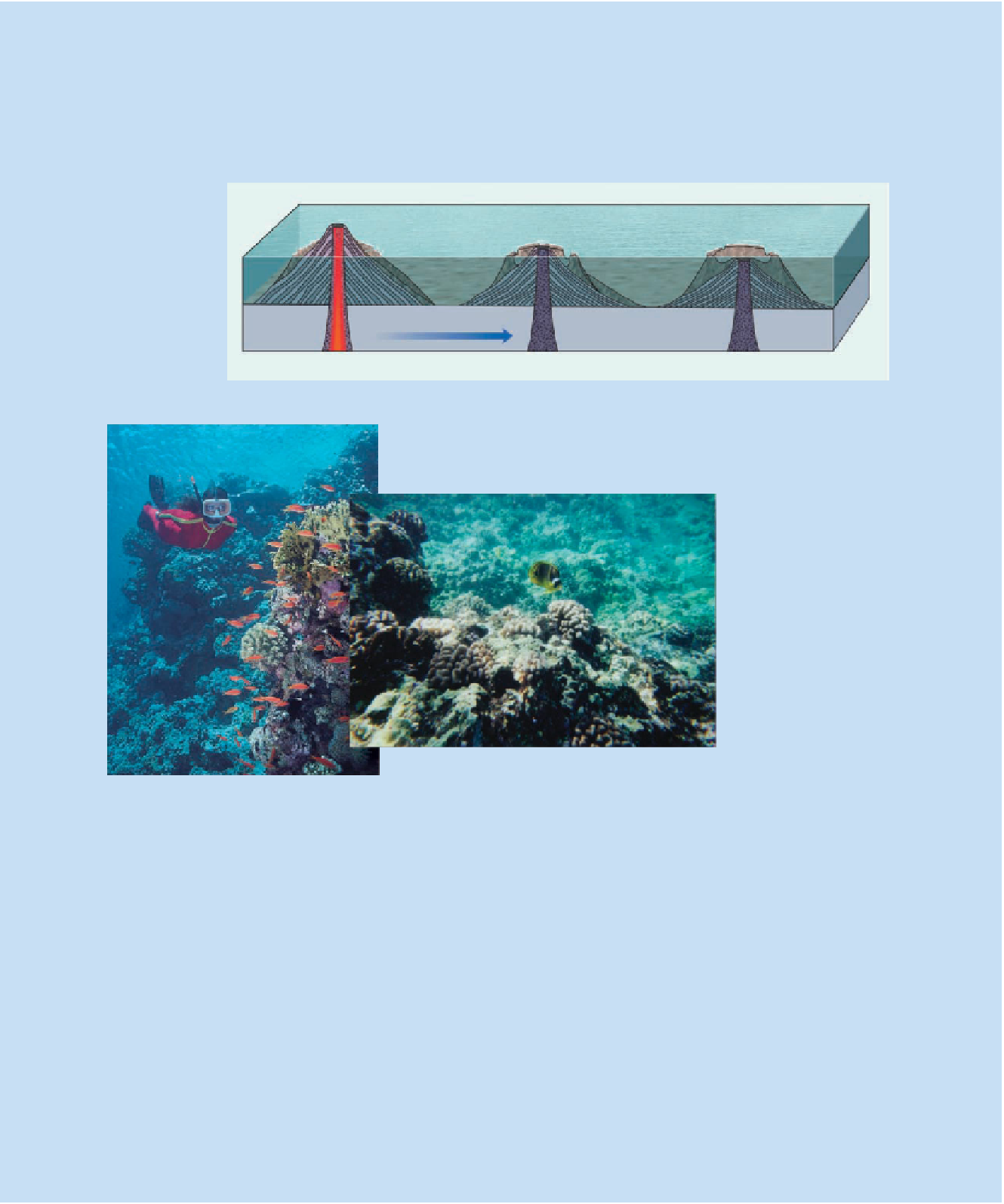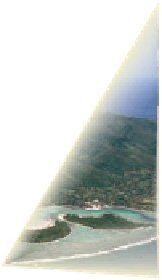Geology Reference
In-Depth Information
Geo-inSight
Reefs: Rocks Made by Organisms
Reefs are wave-resistant structures composed of the skeletons
of corals, mollusks, sponges, and encrusting algae. Most reefs
are characterized as fringing, barrier, or atolls, all of which
actively grow in shallow, warm seawater where there is little
or no influx of detrital sediment, especially mud. Reef rock is
a type of limestone that forms directly as a solid, rather than
from sediment that is later lithified. Ancient reefs are
important reservoirs for hydrocarbons in some areas.
Vertical growth of coral
Vertical growth of coral
Plate moves into deeper water
Fringing reef
Barrier reef
Atoll
1.
Three stages in the evolution of a reef. A fringing reef forms around a volcanic
island, but as the island is carried into deeper water on a moving plate, the
reef is separated from the island by a lagoon and becomes a barrier reef.
Continued plate movement carries the island into even deeper water. The
island disappears below sea level but the reef grows upward, forming an atoll.
2.
Underwater views of reefs
in the Red Sea (left) and
in Hawaii.
3.
The white line of
breaking waves marks
the site of a barrier reef
around Rarotonga in the
Cook Islands in the
Pacific Ocean. The
island is only about
12 km long.
236




Search WWH ::

Custom Search